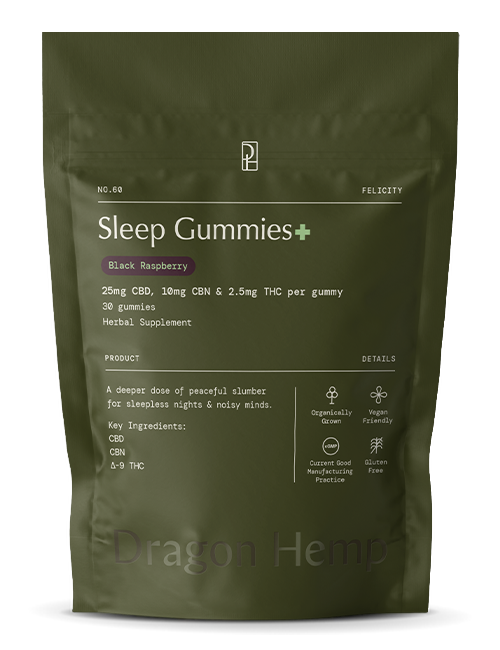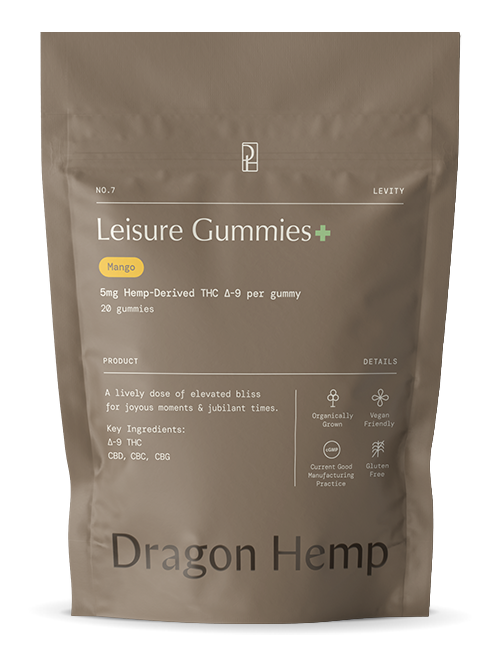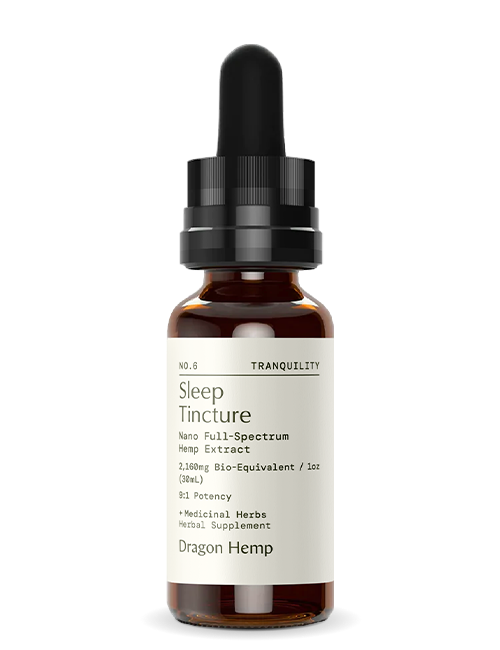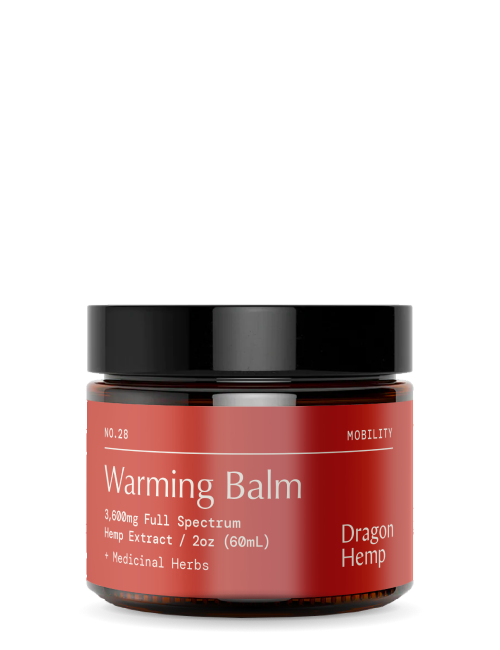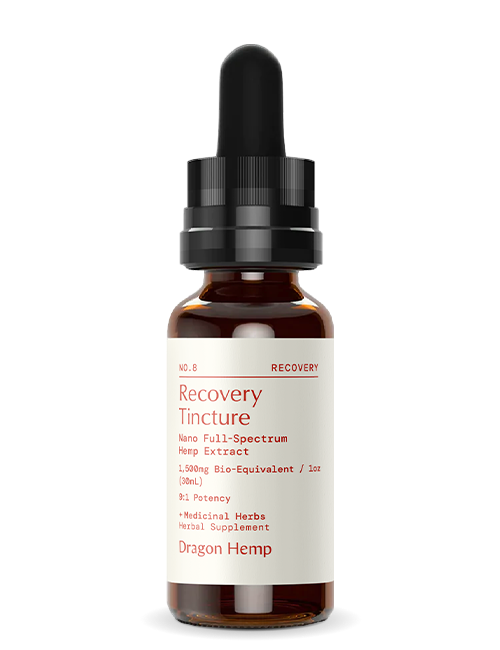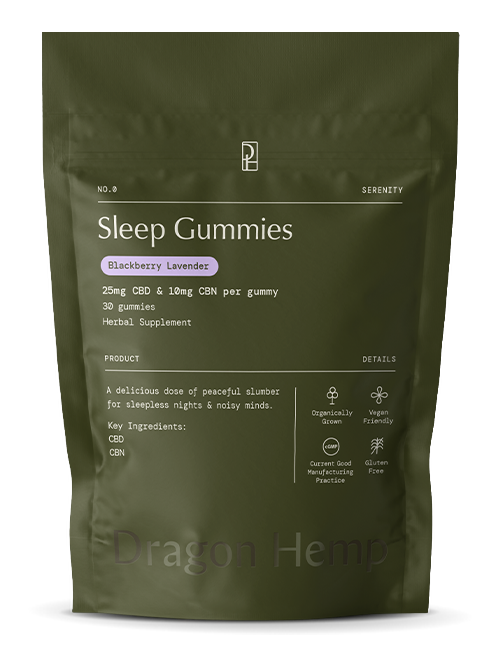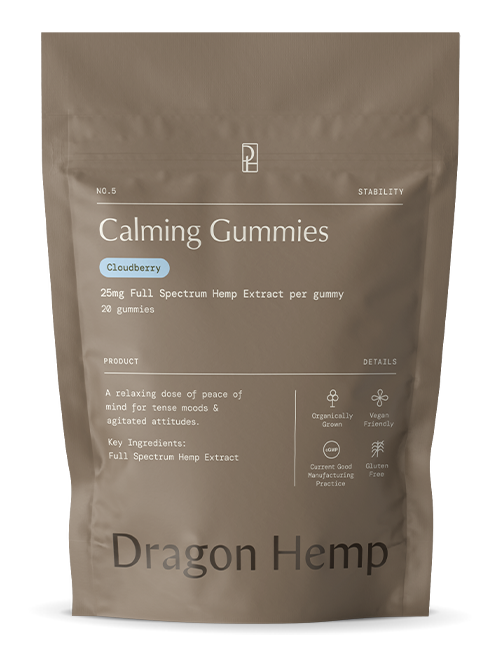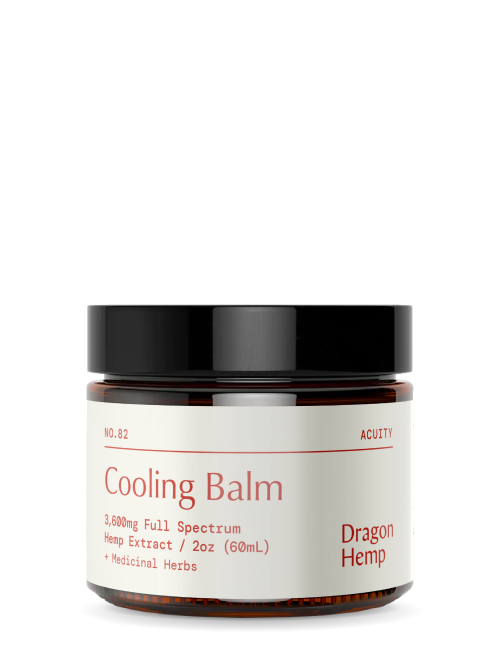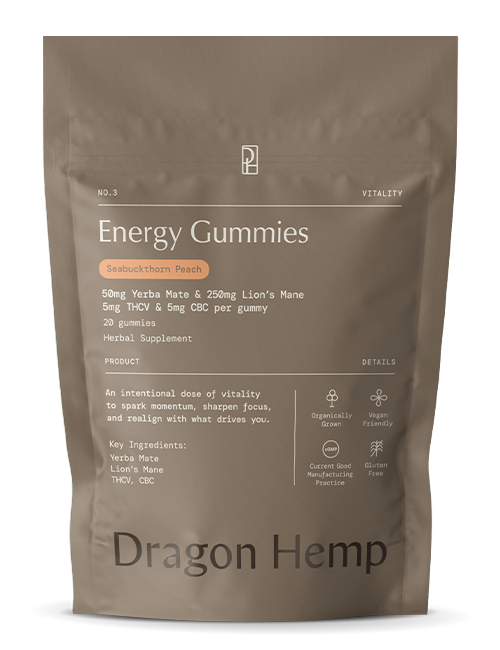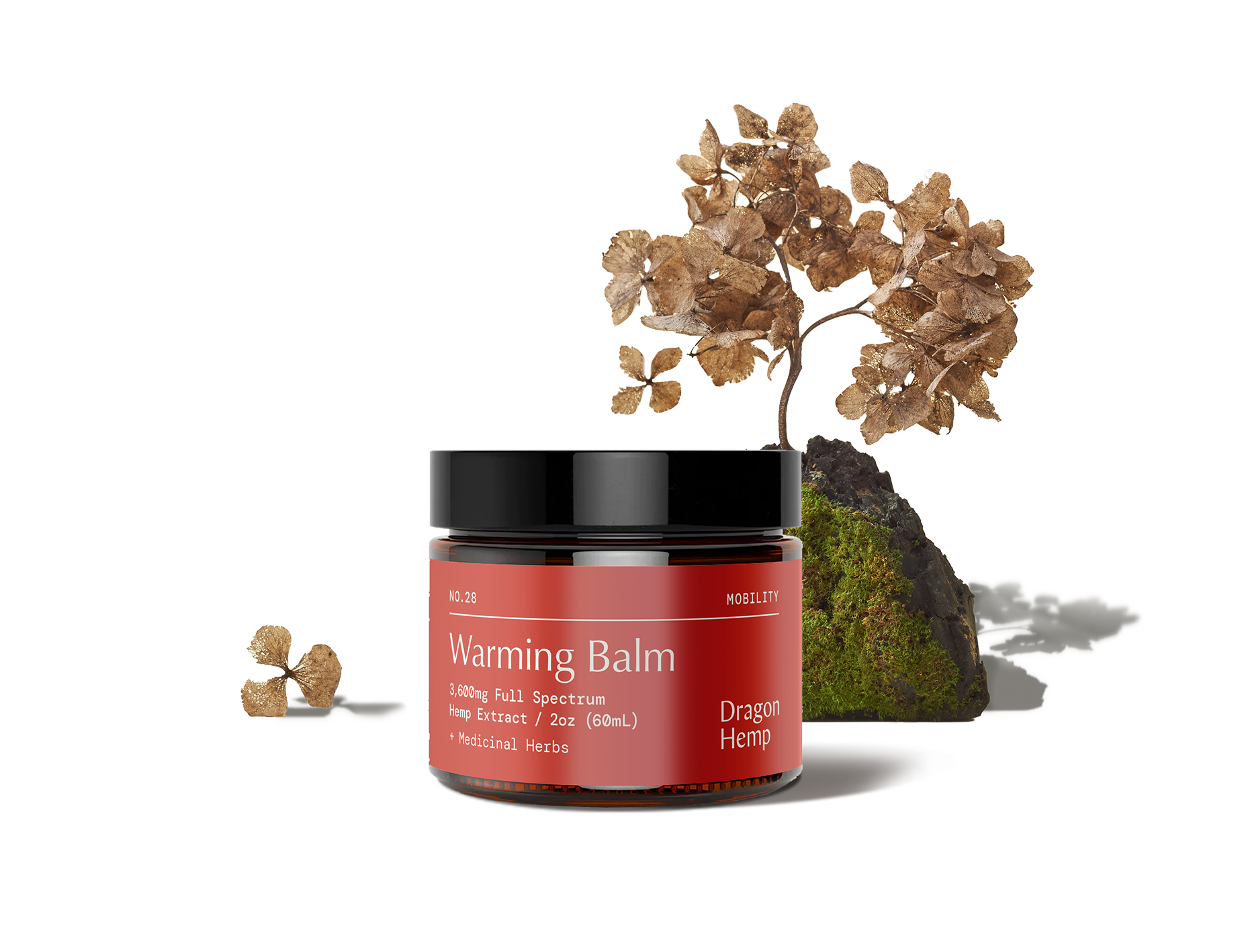
What is CBC Cannabinoid
If you are familiar with hemp and cannabis, you probably know that it has many compounds. According to current research, cannabis supposedly has over 100 cannabinoids, with tetrahydrocannabinol (THC) and cannabidiol (CBD) being the most well-known.
While these two may be the showstoppers, research continues to uncover more cannabinoids. Just as well because their therapeutic value makes them viable options in the search for cheaper, safer, and more effective solutions to wide-ranging health issues.
This article focuses on a lesser-known cannabinoid called cannabichromene or CBC. We discuss what it is, its action mechanism(s), potential health benefits, the best ways to use it, and lastly, where to get it.
Key takeaways
- CBC stands for cannabichromene – a non-psychoactive cannabinoid with potential health benefits.
- CBC does not bind to CB1 receptors but exerts its effects via interactions with non-cannabinoid receptors, e.g., TRPV1, TRPA1, and PPARs.
- CBC has many beneficial properties, but its anti-inflammatory activity is outstanding.
What is CBC cannabinoid?
Considered one of the “big Six” in cannabis research, cannabichromene (CBC) is a potent, non-psychoactive cannabis compound. According to reports, it naturally occurs in lower concentrations, typically less than 1%.
It is formed through the decarboxylation of cannabichromenic acid (CBCA). CBCA is one of the inactive compounds that exist in live cannabis. Once the plant is harvested, exposure to air or heat (curing) converts the CBCA into CBC. The same process creates CBD and THC from cannabidiolic acid (CBDA) and tetrahydrocannabinolic acid (THCA).
Though it comes nowhere near CBD and THC in prominence, CBC rivals these two in potential health benefits. Its exceptional qualities make it an extremely viable option for addressing various health problems. But more on this later.
Is CBD the same as Cannabichromene
No, CBD is not the same as cannabichromene. They are both naturally occurring cannabinoids and share some attributes (e.g., anti-inflammatory activity), but that’s probably where the similarities end.
CBD stands for cannabidiol – one member of the cannabis diarchy. Together with THC, they are among the most studied and well-known cannabinoids. If we were to rank cannabinoids by abundance, CBC would come a distant third. Unfortunately, most breeding programs focus on producing high-CBD or THC strains, furthering the decline of once CBC-rich strains.
Since its discovery in 1966, CBC has attracted a fair amount of interest from scientific quarters. So, it is now much clearer how it works in the human body.
Be that as it may, the following information might not mean much to you unless you are passionate about cannabis (or have a degree in plant science). But if you’re truly interested we’ll provide more clarity on how this cannabinoid works.
The key to CBC’s action mechanism is the endocannabinoid system (ECS). Every mammal has an ECS, which helps them to stay healthy.
The ECS is a regulatory network of endocannabinoid receptors, enzymes, and endocannabinoids (neurotransmitters) that work together to maintain body balance. In scientific terms, this is known as homeostasis.
The body produces endocannabinoids—mainly anandamide and 2-Arachidonoylglycerol—to stimulate the ECS. Research shows that endocannabinoids have near-identical chemical formulas to phytocannabinoids (CBD, CBC, THC, and others), meaning these plant-derived cannabinoids can stimulate the ECS.
Non-psychoactive cannabinoids like CBC, CBD, and CBG bind strongly to a particular type of endocannabinoid receptor known as CB2. In humans, CB2 receptors are expressed mainly in the peripheral immune system. These receptors are also found in the brain, specifically the hypothalamus, amygdala, and hippocampus, but in low numbers.
Besides the CB2 receptor, CBC can bind to non-cannabinoid receptors such as transient receptor vanilloid receptor 1 (TRPV1) and transient receptor ankyrin 1 TRPA1. When these receptors are activated, they trigger the release of endocannabinoids, e.g., anandamide, causing beneficial effects such as pain reduction, mood changes, relaxation, and sleep.
Indeed, CB2 receptors are implicated in various physiological processes like pain perception, inflammatory responses, and immune system regulation. Because it does not bind to CB1 receptors, CBC does not induce psychotropic effects. So, you need not worry about getting “high” from using CBC.
CBC cannabinoid effects
Generally, cannabinoids are safe when taken in moderation, and most people do not respond adversely to them.
But “most people” does not mean everybody, so there is always a chance someone might experience a negative reaction. That’s why it is advisable to start with small doses as you assess how your body responds.
There is no reliable information regarding CBC’s side effects, but this does not mean it’s 100 percent safe. That’s because it is quite similar to CBD, which though generally well-tolerated, may produce side effects such as:
- Nausea
- Dry mouth
- Dizziness
- Fatigue
- Anxiety (rare)
- Low blood pressure
-
Irregular heart rates
On the flip side, CBC may make you feel uplifted, relaxed and sleepy, depending on the dosage. That said, dosage typically depends on individual factors like body weight, metabolism, sex, activity levels, etcetera.
As usual, it is safer to avoid using cannabinoids like CBC when pregnant. The same applies to people on other medications. That’s because cannabinoids like CBD can interact with enzymes that metabolize certain medications.
CBC cannabinoid benefits
The purported properties of CBC have several implications. Here are a few that have scientific backing.
CBC has strong anti-inflammatory properties and may be useful in managing inflammatory conditions. A 2012 animal study investigating the inhibitory effect of CBC on rat inflammation yielded promising results.
The cannabinoid demonstrated the ability to reduce inflammation-induced hypermotility (excessive bowel movement) in vivo. Surprisingly, it did so without activating cannabinoid receptors or the TRP ion channels.
A study showed that CBC might reduce arthritis inflammation. Furthermore, in combination with THC, another animal study highlighted CBC’s powerful anti-inflammatory effects, reinforcing that cannabinoids produce a much greater effect together than alone. This phenomenon has come to be known as the “entourage effect.”
CBC’s anti-inflammatory attribute increases its potential for treating skin conditions like acne. That’s because it suppresses the over-production of lipids by sebaceous glands. The blockage of these glands is associated with acne, suggesting CBC may help eradicate breakouts. It may even be better than good old CBD at fighting acne and other skin blemishes.
Research shows that non-psychoactive cannabinoids like CBC may reduce pain. That’s because they modulate the activity of proteins involved in processing nociceptive pain. These are the TRP vanilloid and ankyrin receptors, e.g., TRPV1 and TRPA1.
As a result, CBC may be useful in managing neuropathic pain. This type of pain is caused by damage to the peripheral or central nervous system.
Because CBC can increase anandamide levels in the body, it may serve as an antidepressant.
Anandamide is a neurotransmitter hormone produced by the body. It is a lipid mediator of the CB1 receptors – the primary target site for psychoactive cannabinoids like THC. When anandamide binds to CB1 receptors, it induces feelings of happiness, which is why it is also known as the “bliss molecule.”
But since CB1 receptors are spread throughout the body, the effects of anandamide are equally widespread. Studies show it has a role in various functions, including sleep, pain relief, memory, and appetite stimulation.
Anandamide is normally broken down by the enzyme fatty acid amide hydrolase (FAAH). So, one way to ensure optimal levels of this neurotransmitter in your body is by preventing its degradation. This can be done by inhibiting the activity of FAAH.
Fortunately, CBC does exactly that! It can prevent FAAH from breaking down anandamide, making it stay longer in your body. This can make you feel more motivated and less anxious. Indeed, research shows that preventing FAAH from breaking down anandamide may be useful in managing cognitive dysfunction, anxiety disorders, and traumatic stress.
It is thought that people who are generally happier than others may have a gene that inhibits FAAH activity. Scientists have since identified this gene (rs324420) and established a link between it and happiness levels. People from Northern Europe, Latin America, and West Africa tend to have this gene.
The effect of CBC on anandamide levels may also improve brain function. According to research, CBC positively affects cells involved in healthy brain functioning. These are called neural stem progenitor cells.
In the study, CBC increased the viability of these cells. But most importantly, the NSPCs evolve into astroglial cells, which maintain brain homeostasis, prevent oxidative stress, and aid neurotransmitter function.
The presence of astroglial cells helps combat inflammation, toxicity, and oxidative stress, which are known to spur neurological conditions like Alzheimer’s.
Moreover, besides the CB receptors, anandamide can also bind to peroxisome proliferator-activated receptors (PPARα, β, and γ) to exert its neuroprotective properties. For instance, when it binds to PPARβ or PPARγ, it may improve memory and learning (neurogenesis). This critical brain-growth process may help keep neurodegenerative conditions like Alzheimer’s at bay.
Best Ways to Take CBC
Like other cannabinoids, CBC can be taken in several ways. Obviously, this also depends on its form.
For example, CBC oils/tinctures are best taken sublingually. This simply means placing the oil under your tongue and waiting briefly (60 seconds) before swallowing. The sublingual method allows the CBC to enter the bloodstream through the glands under your tongue. This is the most effective method for taking CBC.
CBC oil and creams can also be used topically. These are applied to the skin to help with localized pain and inflammation. It may also help alleviate skin blemishes.
You can also ingest CBC oil in capsules, edible treats, and beverages like tea or coffee. However, oral administration has a downside – the effects kick in much slower. The good news is that the effects last longer.
Since CBC typically comes in lower concentrations, you can increase its bioavailability by taking it with a fat-rich diet. Essentially, your imagination is the only potential limitation to how you can take CBC.
When to Take CBC
Though many people worry about this issue, there is NO perfect time to take CBC. It is non-psychoactive, so it won’t make you “high” and prevent you from undertaking your normal duties.
So, the best time to take CBC depends on your routine. If you’re dealing with an acute condition like pain, it is logical to take CBC when you feel the pain. However, you can create a routine that works best for you if it is a chronic condition.
Tinctures and oils can be taken practically anywhere, anytime. But edibles infused with CBC oil might have limitations because you cannot eat them anywhere (decorum!). So, it is all about your routine.
Where to Buy CBC Online
CBC, like CBD, is completely legal in the US if derived from hemp. So, you need not worry about violating your state’s cannabis laws as long as you buy from a reliable source. As you can see, this cannabinoid has a host of potential health benefits.
So, if you’re yearning to try this cannabinoid, we at Dragon Hemp have you covered. We’ve got an array of cannabinoid products, including CBC Energy Gummies, designed to add a little pep into your life. Each gummy contains 5 mg of CBC and an equal amount of THCV to boost your energy reserves and keep you going.
Feel like yourself again.
Peruse our collection of plant-based therapeutics blending time-honored herbal remedies with next-generation cannabinoid extracts.







